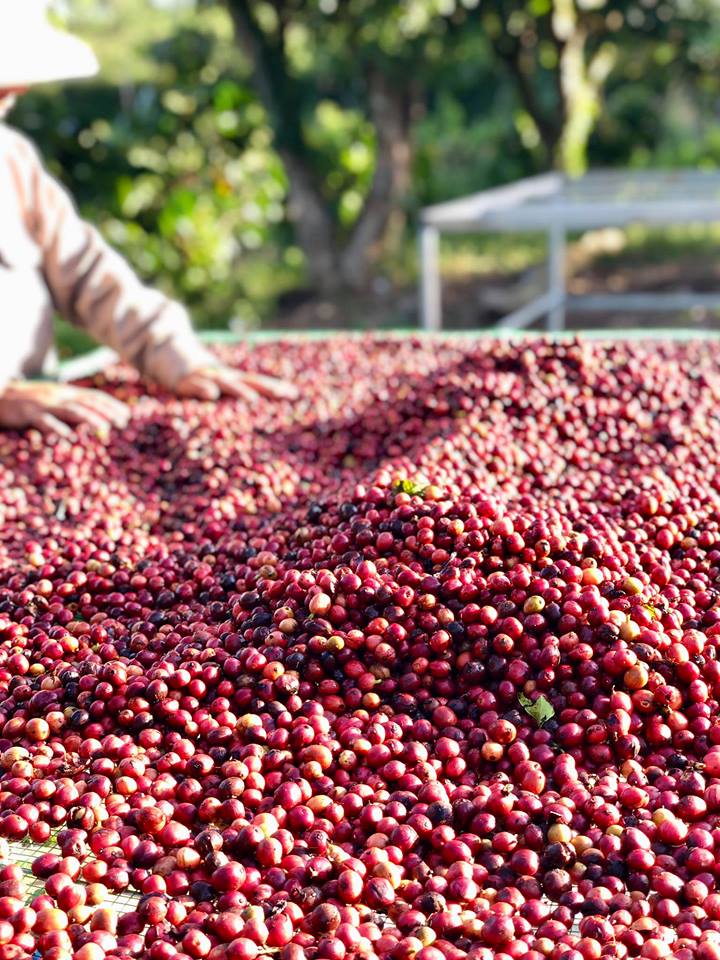Exports by Regions – All Forms of Coffee

World coffee consumption increased by 4.2% to 175.6 million bags in coffee year 2021/22, following a 0.6% rise the previous year. Release of the pent-up demand built-up during the COVID-19 years and sharp global economic growth of 6.0% in 2021, explains the bounce back in coffee consumption in coffee year 2021/22. Decelerating world economic growth rates for 2022 and 2023, coupled with the dramatic rise in the cost of living, will have an impact on the coffee consumption for coffee year 2022/23. It is expected to grow, but at a decelerating rate of 1.7% to 178.5 million bags. The global deceleration is expected to come from non-producing countries, with Europe’s coffee consumption predicted to suffer the largest decrease among all regions, with growth rates falling to 0.1% in coffee year 2022/23 from a 6.0% expansion in coffee year 2021/22. As a result, the world coffee market is expected to undergo another year of deficit, with a shortfall of 7.3 million bags. This outlook is taken from the newest publication of the Statistics Section of the Secretariat of the International Coffee Organization (ICO), the Coffee Report and Outlook (CRO). The CRO offers an insight into the factors moving the global coffee industry in the most recent past and draws out the potential events that may drive the industry in the near future. For further information on the CRO, please contact the Statistics Section at stats@ico.org.
View full report via ICO
https://www.icocoffee.org/documents/cy2022-23/cmr-0323-e.pdf
In February 2023, South America’s exports of all forms of coffee decreased by 29.8% to 3.48 million bags, driven by the three main origins of the region, Brazil, Colombia and Peru, which saw their combined exports fall by 30.7%. The two major origins of the region, Brazil and Colombia, saw their respective shipments of coffee decrease by 32.5% and 5.1% in February 2023, falling to 2.41 million bags and 0.94 million bags. Peru is continuing to see its exports fall at a significantly faster rate, plunging by 44.6% in February 2023. Exports of all forms of coffee from Asia & Oceania decreased by 15.3% to 2.99 million bags in February 2023 and were down 5.6% to 17.4 million bags in the first five months of coffee year 2022/23.
Vietnam and India are the main drivers behind the latest downturn. The former’s exports are down by 25.3% to 1.79 million bags from 2.39 million bags in February 2022, while the latter’s also decreased by 9.5% to 0.49 million bags from 0.54 million bags in the same period. Exports of all forms of coffee from Africa increased by 2.2% to 1.02 million bags in February 2023 from 1.0 million bags in February 2022.
For the first five months of the current coffee year, exports totalled 5.23 million bags as compared with 5.15 million bags in coffee year 2021/22, up 1.4%. Uganda is the main driver behind the jump in the region’s exports, with shipments of coffee increasing by 6.6% to 0.48 million bags as compared with 0.45 million bags in February 2022. Burundi, Côte d’Ivoire and the Democratic Republic of Congo are three other origins of note for February 2023, with their exports up 62.5%, 18.1% and 30.0%, respectively, adding to Uganda’s upward impetus within the region. Kenya was another notable origin in February 2023, though for different reasons, with exports down 43.5%. In February 2023, exports of all forms of coffee from Mexico & Central America were up 2.4% to 1.42 million bags as compared with 1.39 million in February 2022.
For the first five months of the current coffee year, however, exports remain down 10.1%, totalling 4.03 million bags as compared with 4.48 million bags in October–February 2021/22. However, the region’s latest export results broke the four consecutive months of negative growth thanks to Costa Rica (up 6.2%), Dominican Republic (up 95.6%), El Salvador (up 12.9%) and Nicaragua (up 35.1%)
Exports of Coffee by Forms
Total exports of soluble coffee increased by 5.8% in February 2023 to 0.92 million bags from 0.87 million bags in February 2022. In the first five months of coffee year 2022/23, a total of 4.59 million bags of soluble coffee were exported, representing a decrease of 11.2% from the 5.09 million bags exported in the same period during the previous coffee year. Soluble coffee’s share in the total exports of all forms of coffee was 10.2% (measured on a moving 12-month average) in February 2023, up from 10.1% in February 2022.
Brazil is the largest exporter of soluble coffee, shipping 0.3 million bags in February 2023. Exports of roasted beans were up 6.2% in February 2023 to 50,140 bags, as compared with 47,212 bags in February 2022. The cumulative total for coffee year 2022/23 to February 2023 was 292,247 bags, as compared with 336,790 bags in same period a year ago.
Production and Consumption
World coffee production decreased by 1.4% to 168.5 million bags in coffee year 2021/22, hampered by the off-biennial production and negative meteorological conditions in a number of key origins. However, it is expected to bounce back by 1.7% to 171.3 million bags in 2022/23. Increased global fertiliser costs and adverse weather conditions are expected to partially offset the positive impact of biennial production from Brazil, explaining the relatively low rate of growth in coffee year 2022/23. The impact of biennial production is anticipated to drive the outlook for Arabica, which is projected to increase by 4.6% to 98.6 million bags in coffee year 2022/23, following a 7.2% decrease the previous coffee year. Reflecting its cyclical output, Arabica’s share of the total coffee production is expected to increase to 57.5% from 55.9% in coffee year 2021/22.
